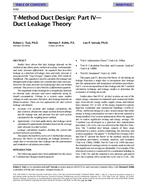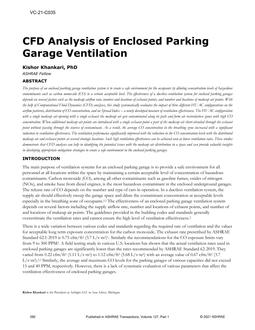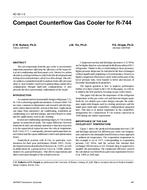Click here to purchase
Residential and commercial HVAC consumption in the United States accounts for 30% of average summer peak-day electricity loads, 13% of total electricity use, and 44% of total natural gas use. A 2002 study published by the Hewlett Foundation indicates that improved HVAC installation and maintenance represents one of the largest achievable opportunities for energy efficiency savings. Laboratory test results are provided of a new 3-ton split-system 13-SEER air conditioner using R-22 refrigerant. Test conditions differ from those used to rate cooling systems (ANSI/AHRI Standard 210/240) to match typical installations in California. The equipment was set up in three chambers to simulate standard test conditions and more realistic hot attic conditions. Tests were conducted using both thermostatic expansion valve (TXV) and piston metering device (non-TXV). Test results are provided for the following HVAC faults that occur due to installation and maintenance deficiencies and degradation: low airflow, coil blockage, refrigerant under and over charge, duct leakage, ducts and equipment located in hot attic conditions, improper TXV sensing bulb installation, non-condensables, and restrictions. Baseline tests using the code tester instead of forced air unit (FAU) are only 2.9% less than the 13 SEER rating under the ARI 210/240 test conditions (TXV, ducts and equipment located in conditioned space). When the FAU is used, however, the SEER is reduced by 8.1%. The hot attic tests reduce EER by 11% and SEER by 23%. Moderate to severe non-condensables (0.3 to 1% by weight) reduce EER and SEER by 12 to 38% and increase electric power by 8 to 22%. Refrigerant restrictions reduce EER and SEER by 30 to 59%. The combination of multiple faults such as low airflow, undercharge, duct leakage, and condenser coil blockage reduce EER by 54% and SEER by 67%. Laboratory tests are used to develop methods to differentiate non-condensables from over charge or condenser coil blockage and restrictions from under charge and avoid false charge diagnostics. This is not possible using standard charge procedures specified in the California building energy efficiency standards.
Citation: ASHRAE Trans., vol. 118, pt. 2, San Antonio, TX
Product Details
- Published:
- 2012
- Number of Pages:
- 8
- File Size:
- 1 file , 500 KB
- Product Code(s):
- D-SA-12-C021


